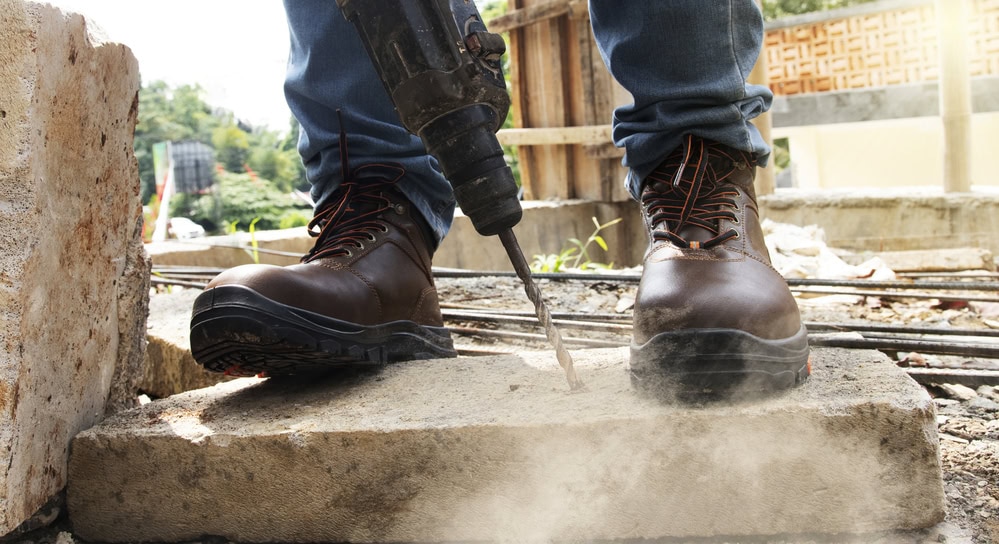Safety shoes with new labeling
Appropriate foot protection at work not only prevents foot injuries. It also reduces the risk of slipping and tripping accidents. The quality requirements for occupational safety footwear are standardized. A revision of the relevant standard entails changes to the labeling of some protective properties.

Whether on the construction site or on the factory floor, in the warehouse or in the workshop - protecting your feet with safety shoes is essential in many workplaces. This foot protection is part of personal protective equipment (PPE), i.e. the employer must provide suitable footwear and ensure that it is replaced immediately in the event of defects or wear. In many industries and companies, wearing safety shoes has long been a matter of course. This has been helped by the fact that today's safety shoes have little in common with the clunky footwear of the past. Today, the market offers a wide range of products with attractive models for many different purposes.
New letter abbreviations for specific protective properties
However, the variety of models increases the agony of choice. Even the best safety footwear can only provide optimum protection if it not only fits the wearer, but has also been selected to suit the risks and hazards of the working environment. Anyone who uses foot protection or even buys it for colleagues should therefore be able to "read" the labeling of the shoe types.
The EN ISO 20345 standard is decisive for the various requirements for safety footwear. This quality standard was republished following a revision in June 2022. Some of the changes also affect the labeling requirements. This is because the protective properties of a safety shoe are coded using letters and new abbreviations have been added for newer shoe models. As before, a distinction is made between the basic requirements that every safety shoe must meet and the optional additional requirements depending on the intended use.
The following innovations are relevant for the labeling of safety footwear:
- The former "puncture resistance" is replaced by "resistance to puncture" with the three categories P, PL and PS.
- The additional requirements for overcaps (SC) and for holding on to ladders (LG) are new.
- Resistance to oil and gasoline is indicated by the abbreviation FO.
- For wetness protection, the previous additional requirement WRU has been renamed WPA.
The Table provides an overview of the old and new abbreviations, sorted by protection category. If you know the underlying English terms, the abbreviations are easier to remember.
Slip resistance becomes a basic requirement
Slip resistance is a little more complicated. Previously, this was determined using various methods and indicated with the abbreviations SRA, SRB or SRC. These three categories are now no longer used. Instead, a basic slip resistance - determined using a soap-like solution on floor tiles - will become the basic requirement. A further anti-slip property - determined on ceramic tiles with glycerine - can be specified as an additional requirement with SR.
If you miss the abbreviation ESD (electrostatic discharge) in the table, please note that it is not EN 20345 that is relevant, but the standardization for electrostatics (IEC 61340). If a shoe bears the abbreviation ESD, this means that the shoe discharges electrostatic charges via the sole of the shoe. This is intended to prevent sensitive electronic components from being damaged by small discharges - such as those caused by shuffling over carpeting.
New protection classes for watertightness
In addition to changing the basic requirements for the protective toe cap, the standard revision has also defined the two new protection classes S6 and S7. They apply if the entire shoe is waterproof, e.g. with a membrane. This means that classes S6 and S7 are comparable with the previous "S2 WR" and "S3 WR" designations.
The requirements for the orthopaedic fitting of safety shoes have also changed. This is likely to be more relevant for orthopaedic shoemakers who fit safety shoes if this is necessary due to foot disorders or deformities. Those affected are well advised to clarify in advance who will cover these additional costs; this may be accident insurance, disability insurance or health insurance.
The risks on site are decisive
With all the complex protective properties, some people would be grateful for a list specifying which type of footwear with which abbreviations is to be worn at which workplace and for which activities. There is no legally binding overview. The decisive factor is always the specific work situation on site, i.e. the existing hazards, floor conditions, etc. A list from the DGUV is helpful (see practical tip).
This article first appeared in the 2/24 issue of SAVE.









